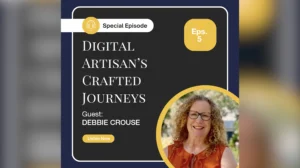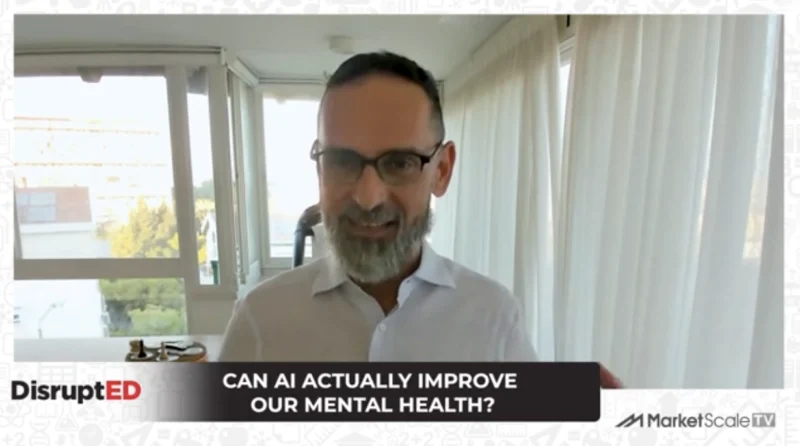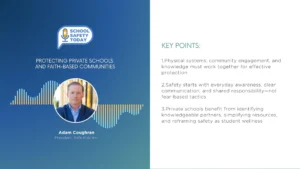Why a Multiscreen Classroom is the Future of Learning
Hybrid-remote learning provides the flexibility and freedom schools, parents, and students need in the current pandemic. However, moving a traditional classroom that’s built for face-to-face delivery to a hybrid-remote environment where instructors are teaching to both students in the classroom and online, often simultaneously, will take more than simply a laptop and a video conferencing application. With only these basic tools, remote students may be positioned to fail while teachers are burdened with an unnatural way to teach and a heavier workload. Enter the multiscreen classroom.
In fact, the recent study “Learning and instruction in the hybrid virtual classroom: An investigation of students’ engagement and the effect of quizzes,” published in January by Elsevier, found that both students’ relatedness to peers and intrinsic motivation — both of which are shown to deeply impact academic achievement — work best when multiple screens and collaboration technology is in place.
While it may be hard to imagine a classroom with more than one screen, the success of the hybrid-remote model will depend upon it. Multiple displays enable teachers and students to easily see and engage with each other. To affordably transition to this new model and create a cohesive environment for everyone, schools can rely on the latest budget-friendly display, projector, and presentation solutions designed for education.
The model classroom
In the study, the school employed a classroom setup with the focus on offering all students — whether they were in the classroom or joining online — comparable learning experiences. The setup was also designed to make it more natural and effortless for instructors to teach and engage with students. Remote students were projected on four projector screens at the back of the class, with four students appearing on each screen.
Rather than a single laptop screen cluttered with tiny, undecipherable faces, each student appears large, almost in human size, on the projector screen. It’s as if they’re sitting right there in class with the rest of the students. Teachers could gauge the reaction and comprehension of every student simply by looking out into the classroom. They never had to stop the flow of the lecture to bend down awkwardly to see and hear online participants from a laptop.
Likewise, cameras were set up to ensure online students could see the teacher clearly at all times. Teachers were able to lecture from the front of the room as well as present digital content seamlessly from an interactive flat panel (IFP). In addition, teachers in the study were given a dashboard that allowed them to screen share, annotate, offer polls and quizzes, and other tools, which encourage interaction and engagement more naturally and spontaneously.
The study found that technology design choices directly influenced learning in a synchronous hybrid-remote classroom. The multiscreen, highly interactive setup gave staff the means to overcome engagement and comprehension problems that distance can create. As a result, it felt as natural as learning in person.
Going multiscreen for the new normal: How to implement this concept affordably
This study, and many like it over the last decade, have proven that remote learning works best with technology that creates an effortless experience for both teachers and students. While this study used a technology design that spared no expense, a similar setup can be achieved in all classrooms—one that’s not only affordable, but also just as effective. High-quality education solutions have come down in cost in the last two years. What’s more, they’re packed with features specifically engineered and tested to breach any barriers.
Rather than using a laptop as the sole source to observe and interact with students, an IFP becomes the nucleus of the classroom in this new model. An IFP is a display featuring intuitive collaboration technology that helps teachers and students have meaning interaction no matter where they’re located. Those sporting the most recent innovations, such as cloud whiteboarding, annotation, recording, split-screen modes, near-field communication (NFC), and more, make them the ideal platform for hybrid learning.
Among an IFP’s features, instructors will need cloud whiteboarding, screen and audio recording, and NFC capabilities in particular. Much like the sophisticated dashboard given to teachers in the study, cloud whiteboarding allows any student to see the instructor’s IFP screen from their laptop, Chromebook, or other device’s web browser. IFP’s with screen recording technology and a built-in microphone array can capture, record, and archive everything happening onscreen along with the audio. The entire session can be saved and easily shared to cloud storage such as Google or Microsoft One drive for students to access and review. Finally, an NFC sensor can be a real differentiator. These sensors save teachers the time and frustrations of manually logging into the IFP and their applications. They simply swipe a personalized NFC card in front of the display to log-in and are granted with immediate access to their materials. This is especially useful in the pandemic as more schools have teachers, not students, move from room to room to limit traffic throughout the building.
Remote learning tools
For most schools, including remote learners into the physical classroom is by far the biggest challenge. One key takeaway from the study is that teachers are more effective when they can see and interact with remote students just as if they are there. To enable this, a wireless presentation system (WPS) combined with a projector is the most affordable and flexible way to create a full-size image of remote students at the back of the room. Instead of having to install HDMI cables and switchers, a WPS uses a simple button or app that enables any HDMI source, such as a Chromebook, to send content to a projector or display. Here, it can be connected to the latest laser or smart classroom projectors. This allows teachers to see every remote student in crisp detail and be able to spot questions and inattentiveness immediately.
Like the study, schools can build a multiscreen classroom system using projectors that are inexpensive, unceasingly bright, don’t require a complex installation, and are easy to maintain. The latest education models include laser and smart projectors.
The benefit of using a laser projector over a conventional lamp-based projector is that you can use it for years without worrying about replacement lamps. Traditional projector lamps have to be replaced, get dimmer over time, and can bring a remote class to a halt if they fail. The other benefit is that many laser projectors now have HDMI output ports. Simply by connecting a cable or wireless transmitter, you can have a multiscreen classroom to support nearly any class size or configuration. These HDMI ports support both audio and video signals and can also allow the signal to be streamed to other classrooms, so that instructors can teach many students throughout the building from one location to strengthen social distancing measures.
Another option is a smart projector. It can do almost everything a computer can do and, in some respects, even more. It provides cloud account integration, screen-mirroring capabilities, apps, and internet connectivity without any additional equipment installed or requiring an additional laptop source to host the video conference.
Schools will also have to think about how to blend the two environments into one cohesive unit. With annotation, digital whiteboarding, cloud integration, and other smart features offered by IFPs and smart projectors, teachers can create presentations that can be easily shared across a video conferencing platform or wirelessly casted to the devices of students in the room. Likewise, using complementary app-based tools, all students can join in, allowing them to engage with materials, share their opinion or answer onscreen, and never feel left out. These capabilities encourage spontaneous interaction, regardless of location, that is comparable to exchanges that would naturally occur in the classroom and, like in the study, have shown to improve outcomes.
The hybrid-remote model is undoubtedly challenging, but with multiscreen technology to support virtual learning, it can be a great opportunity. After all, school isn’t just a building. It’s where people interact to learn concepts — and that can be done anywhere, if given the right tools.
The world may not always be in a pandemic, but remote learning is an increasing reality within education. For example, most colleges now require foreign language, but rural schools may not have the talent in the area to offer Spanish, French, and German. Or perhaps a school may want to add AP-level courses to its roster. By creating a classroom that fully supports a virtual model, schools can open up new opportunities and build strong, smart learners who excel in this new environment.








